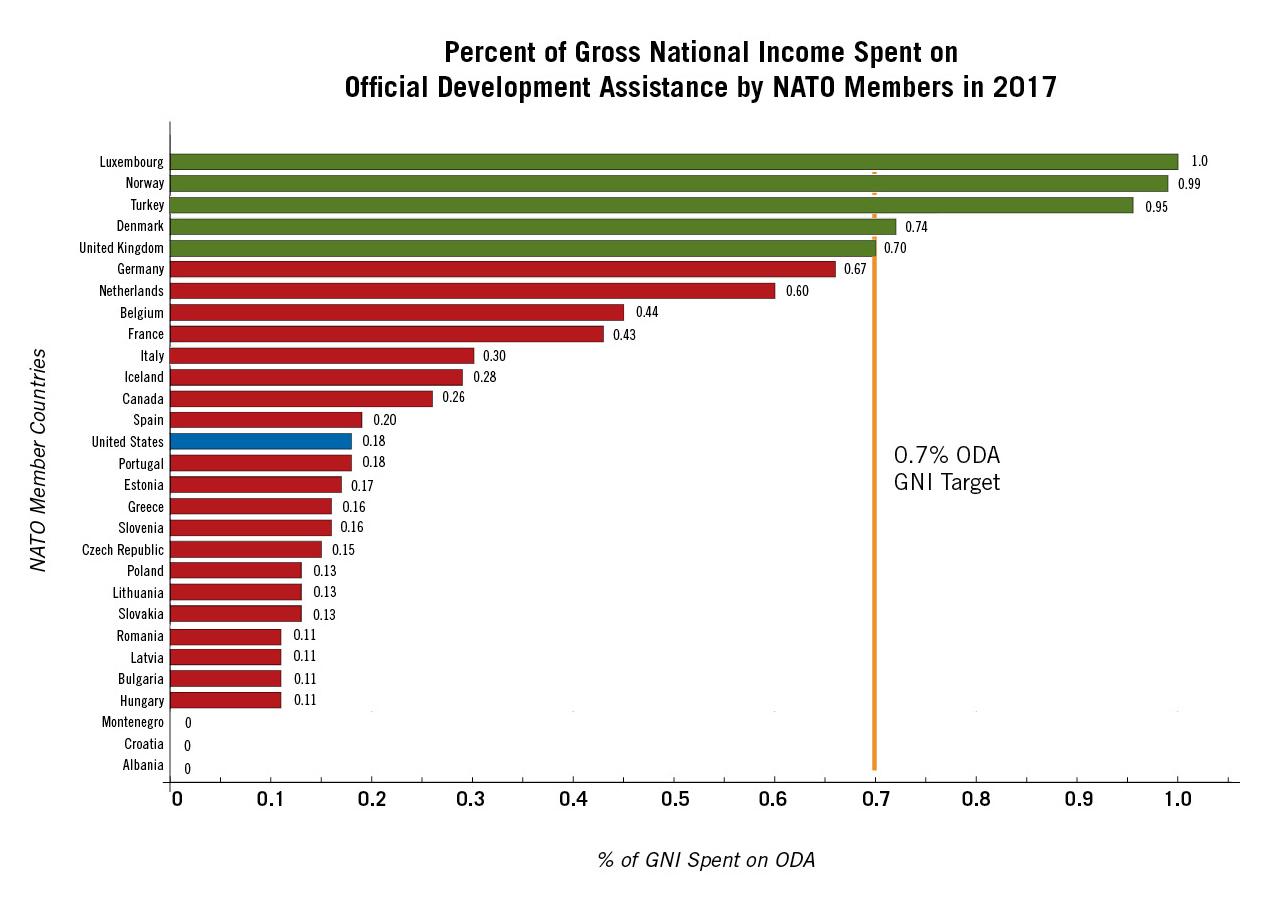
North Atlantic Treaty Organization (NATO) Secretary General Jens van Stoltenberg chose to celebrate NATO’s 70th birthday in Washington this week, telling Congress, “through NATO, the United States has more friends and allies than any other power. This has made the United States stronger, safer, and more secure.”
Here are seven things to know about NATO at 70 which highlight that the alliance is much more than a promise to honor the principle “an attack on one is an attack on all.”
1. NATO is a military and political alliance.
While NATO was created in 1949 around the principle of collective defense, NATO is both a political and military alliance headed by a European civilian and American military leader that promotes democratic values and prevents conflict. As Senators Jim Risch (R-ID) and Jeanne Shaheen (D-NH) wrote this week, “NATO membership has proven not only to be a military success but a political and economic one.”
2. NATO receives funding from the International Affairs Budget.
While most NATO contributions come from the defense budget, the United States also supports NATO through the International Affairs Budget, contributing 22% of NATO’s Civilian Budget. These resources support NATO’s governance and administration, including its headquarters in Brussels, as well as the NATO Parliamentary Assembly which brings together legislators from all NATO countries to address security-related issues.
Rep. Gerald Connolly (D-VA) currently leads the U.S. Delegation to the NATO Parliamentary Assembly and has said, “On the eve of the 70th Anniversary of the Alliance, Russian aggression towards NATO Allies and around the world reminds us of the importance of this critical military and political alliance.”
3. Many of NATO’s members received U.S. foreign assistance.
Many of NATO’s 12 founding members received U.S. assistance after World War II under the Marshall Plan to rebuild their economies, and many of NATO’s newer members in Eastern Europe received U.S. foreign assistance after the fall of the Berlin Wall in 1989 to strengthen democratic institutions, market economies, and their military forces. These countries have “graduated” from foreign assistance to become allies and security partners.
4. Many NATO members are among America’s largest export markets and contributors of foreign direct investment.
Four of America’s top ten export markets are also members of NATO: the UK, Germany, the Netherlands, and Canada. NATO members are also significant contributors of foreign direct investment in the United States. In Iowa, Germany is the largest source of foreign direct investment, with Denmark, France, and Italy in the top five. Germany is also the largest source of foreign direct investment in South Carolina, with Canada, the UK, and France in the top five. As Dan Hamilton and Joe Quinlan said in The Transatlantic Economy 2019, “No two other regions in the world are as deeply integrated as the U.S. and Europe.”
5. Many NATO members invest more on global development than the United States.
While it is widely observed that only six other NATO members meet the pledge to spend 2% of their budgets on defense, there is a widely recognized target for spending on official development assistance: 0.7% of gross national income that shows a different picture.

The United States spends the largest percentage on defense, but just 0.18% of its gross national income on official development assistance, making it the 14th most generous country among NATO members —in the middle of the pack. Speaking about the security contributions of development assistance, Chancellor Merkel observed, “When we help people in their home countries to live a better life and thereby prevent crises, this is also a contribution to security.”
6. The U.S. representative to NATO is a diplomat.
While a U.S. military officer has traditionally served as the Supreme Allied Commander of NATO forces, America’s representative to NATO is a diplomat, and past NATO Ambassadors have included foreign service officers like Kurt Volker, Victoria Nuland, and Nicholas Burns. Former-Senator Kay Bailey Hutchinson is America’s current Ambassador to NATO and has observed, “We couldn’t do by ourselves what we do in NATO, and the Europeans could not do in the EU what we do in NATO.”
7. NATO’s leaders recognize the importance of diplomacy and development and partner with civilians to tackle global challenges.
NATO’s official doctrine recognizes that “addressing crisis situations calls for a comprehensive approach combining political, civilian and military instruments.” Its civilian-military partnerships are especially critical in the fight against terrorism and responding to hybrid threats that do not have military solutions alone.
In testimony to Congress, General Curtis Scaparrotti – who serves both as Commander of U.S. European Command and NATO’s Supreme Allied Commander –said last year, “Everything we do in EUCOM, we look at it as an interagency activity. Generally, with State in the lead, as diplomacy leads, is the way that we work here in a democracy.”